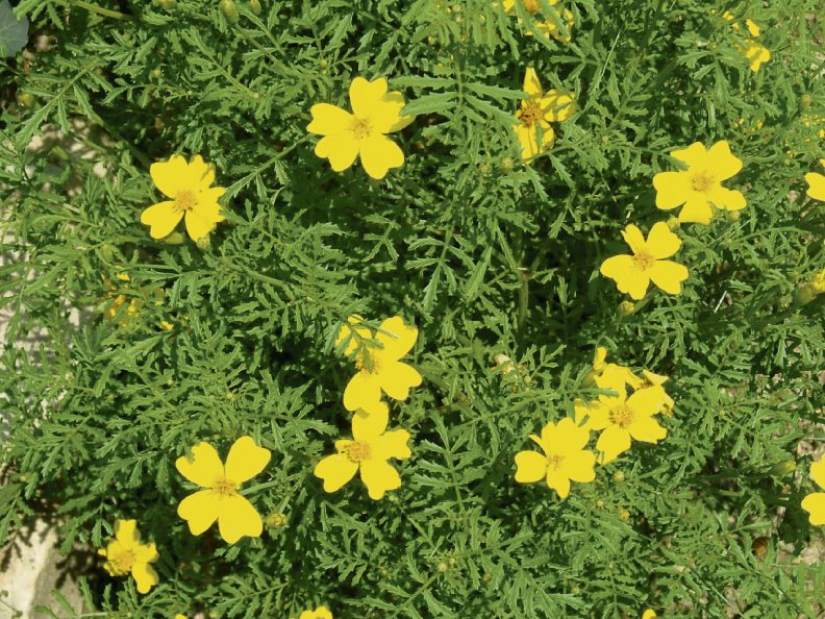Walliser: In praise of the marigold
Marigolds may not be the world's most gorgeous flowers, but that doesn't mean they aren't worth growing.
While I avoided these humble little beauties in favor of more unusual annuals for many years, I've recently become reacquainted with this old-fashioned garden stalwart.
Marigolds have many merits. Though they are often said to repel rabbits, deer and other pests, this hasn't proved to be true in my gardens. In fact, the slugs and bunnies seem to enjoy my marigolds quite a bit. But, then again, the slugs and bunnies seem to enjoy a lot of plants in my garden.
One pest marigolds do repel are root knot nematodes. These microscopic soil-dwelling pests aren't typically problematic here in Western Pennsylvania, but in some parts of the world, African and French marigolds are grown as a cover crop and tilled into the soil before food crops are planted to help combat them.
The orange, red and yellow blossoms of marigolds are very attractive to many species of pollinators and other beneficial insects. Having them in the garden helps provide nectar to pest-munching predatory insects, such as soldier beetles and syrphid flies.
Marigolds are drought-tolerant and heat-loving, making them a perfect fit for sunny flower beds and vegetable gardens.
There are many different types of marigolds available to gardeners, and like many gardeners, I certainly have my personal favorites.
Among the most-adored plants in my garden are the gem, or signet, marigolds (Tagetes tenuifolia). This tiny-flowered variety produces blossoms that are a mere one-half inch across. The plants form small, round globes of lacy foliage, and there are hundreds of small flowers on each plant. Unlike French marigolds, gem marigolds do not have an unpleasant scent; instead they smell of citrus. I grow “Tangerine Gem,” “Lemon Gem” and “Red Gem” from seed every year by simply tossing a few seeds into the garden in mid-May. The edible petals look beautiful in a salad.
Another favorite are the African marigolds (Tagetes erecta). These massive beauties are the granddaddies of all marigolds. They grow up to 3 feet tall and produce pom-pom flowers that are 3 to 4 inches wide. The plants are highly branched, with flowers that come in shades of orange, yellow, rust, cream and even maroon. African marigolds love hot, dry conditions.
The most common marigolds are the French marigolds (Tagetes patula). These small, bushy plants produce scores of flowers that measure from 1 to 2 inches across. Flowers can be double or single and come in both solid and bi-color mixes of red, orange, burgundy and yellow. Most varieties grow between 8 and 18 inches tall.
French marigolds look lovely tucked along the edges of the vegetable garden or in groups of three or five scattered down the length of a planting bed. I love to grow French marigolds along the driveway as they easily shrug off the heat reflected from the asphalt.
There's one other marigold worth growing, if you can find seeds or starter plants. It's called Mexican tarragon, or Mexican mint marigold (Tagetes lucida). The lemon-yellow flowers are produced late in the season, but the main reason to grow this plant is for its foliage. The leaves of this marigold are licorice flavored, and they can be used as a tarragon substitute in the kitchen. It's a fairly tall plant, reaching up to 2 1⁄2 feet tall by summer's end.
Horticulturist Jessica Walliser co-hosts “The Organic Gardeners” at 7 a.m. Sundays on KDKA Radio with Doug Oster. She is the author of several gardening books, including “Attracting Beneficial Bugs to Your Garden: A Natural Approach to Pest Control” and “Good Bug, Bad Bug.” Her website is jessicawalliser.com.
Send your gardening or landscaping questions to tribliving@tribweb.com or The Good Earth, 503 Martindale St., 3rd Floor, D.L. Clark Building, Pittsburgh, PA 15212.


